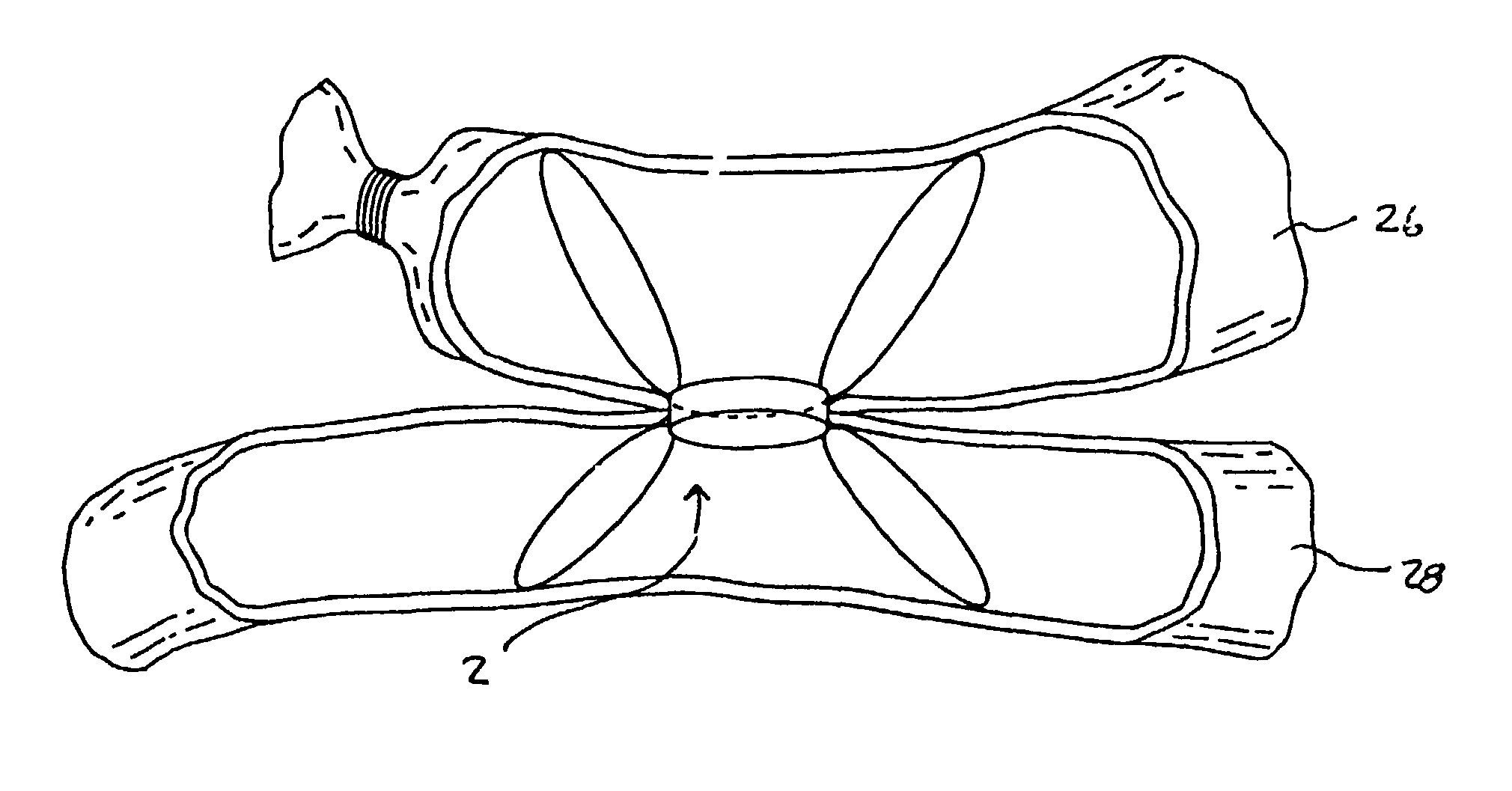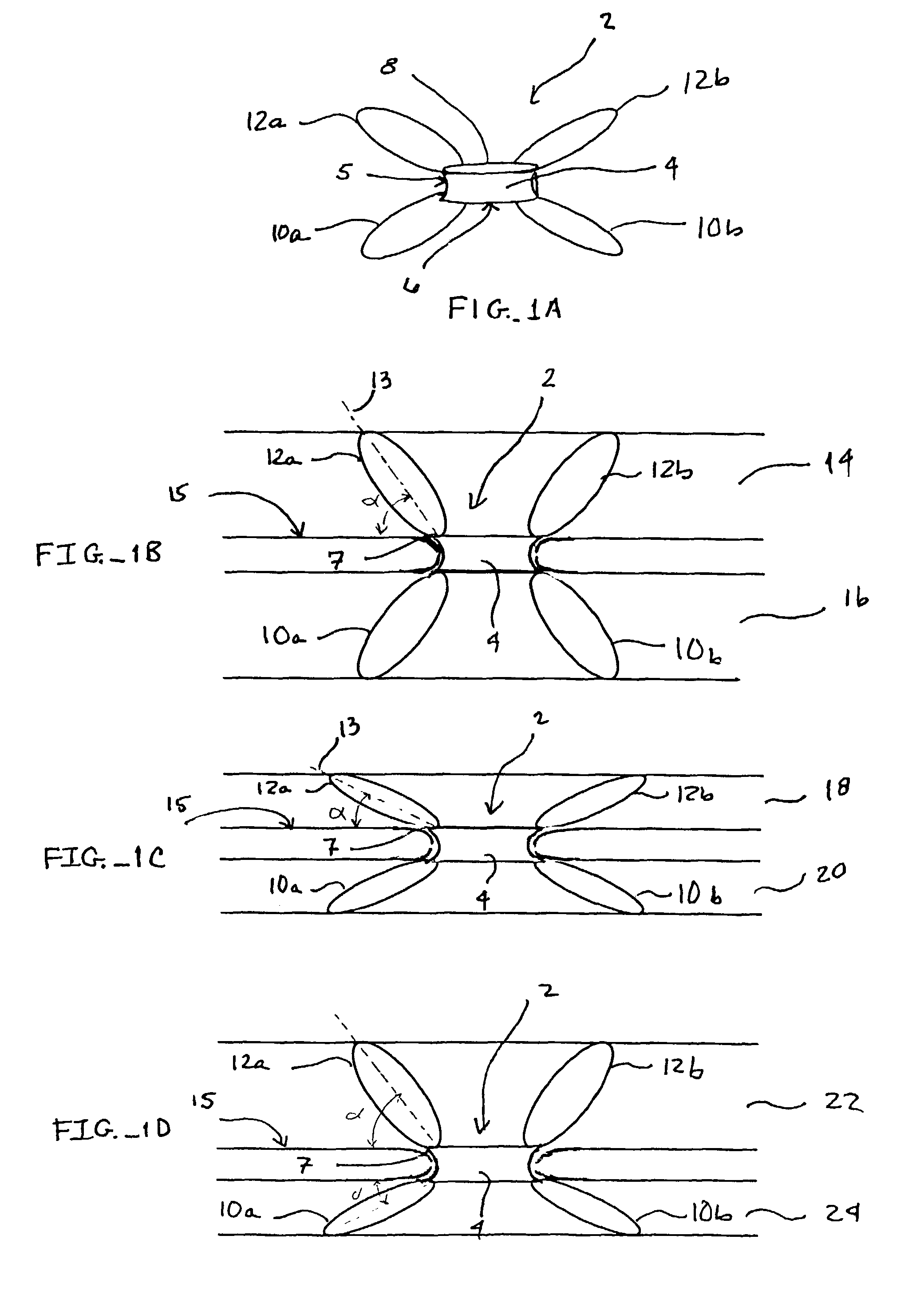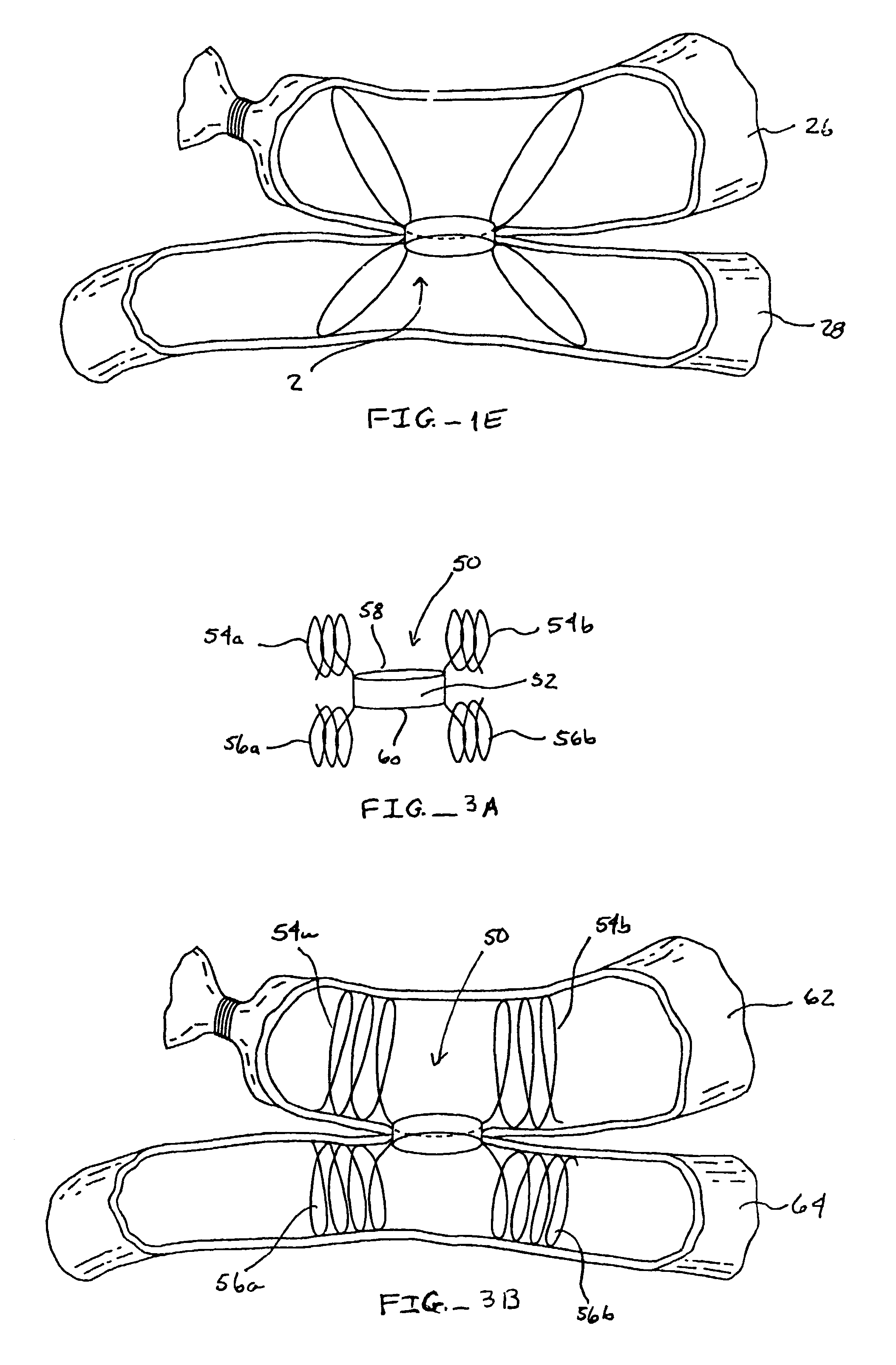Devices and methods for interconnecting vessels
a technology of interconnected vessels and devices, applied in the field of anastomosis and anastomosis devices, can solve the problems of affecting the perfusion of the tissue served by the blood flow, restricting blood flow, and myocardial infarction, and achieves the effect of quick and efficient performing an anastomosis, minimizing tension and compression forces, and readily conforming to the inside wall
- Summary
- Abstract
- Description
- Claims
- Application Information
AI Technical Summary
Benefits of technology
Problems solved by technology
Method used
Image
Examples
Embodiment Construction
[0042]The present invention provides implantable devices and associated methods for interconnecting human vessels, lumens, ducts or other tubular organs rapidly, safely and in a minimally invasive manner. These device and methods are particularly helpful in surgical procedures involving the anastomosis of small vessels or the like within a limited surgical access field, such as coronary artery bypass graft procedures (CABG), and such devices and methods are exemplary described in detailed herein in the context of a CABG procedure. As such, a subject device is positioned within a target or native vessel, such as downstream of a diseased coronary artery, which allows the attachment of a second, graft vessel to form the anastomosis. The subject invention provides devices and methods for forming both side-to-side and end-to-side anastomosis.
[0043]Before the present invention, devices and methods used therein are disclosed and described, it is to be understood that this invention is not ...
PUM
 Login to View More
Login to View More Abstract
Description
Claims
Application Information
 Login to View More
Login to View More - R&D
- Intellectual Property
- Life Sciences
- Materials
- Tech Scout
- Unparalleled Data Quality
- Higher Quality Content
- 60% Fewer Hallucinations
Browse by: Latest US Patents, China's latest patents, Technical Efficacy Thesaurus, Application Domain, Technology Topic, Popular Technical Reports.
© 2025 PatSnap. All rights reserved.Legal|Privacy policy|Modern Slavery Act Transparency Statement|Sitemap|About US| Contact US: help@patsnap.com



